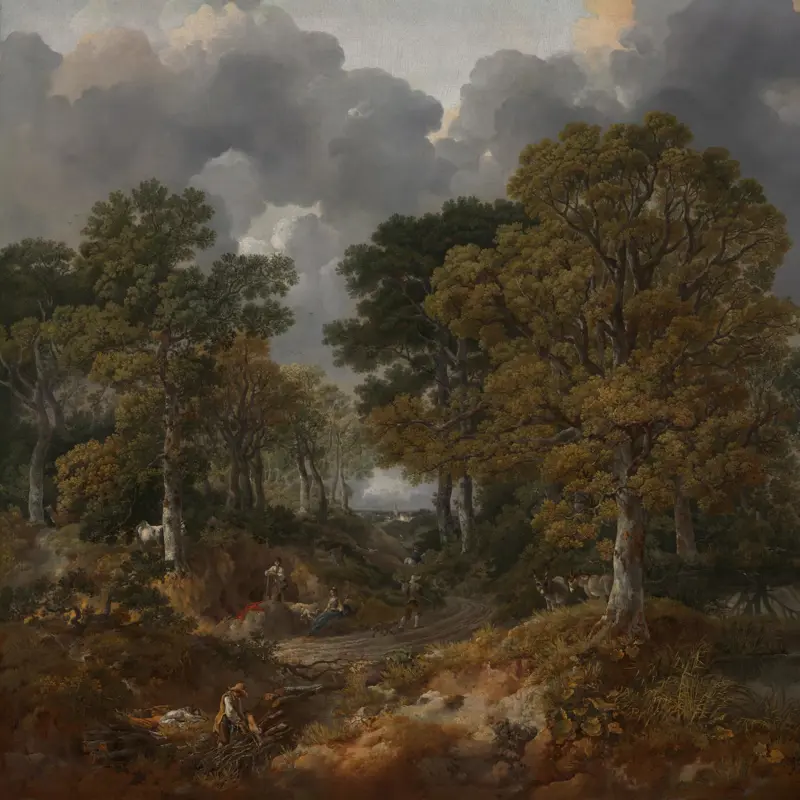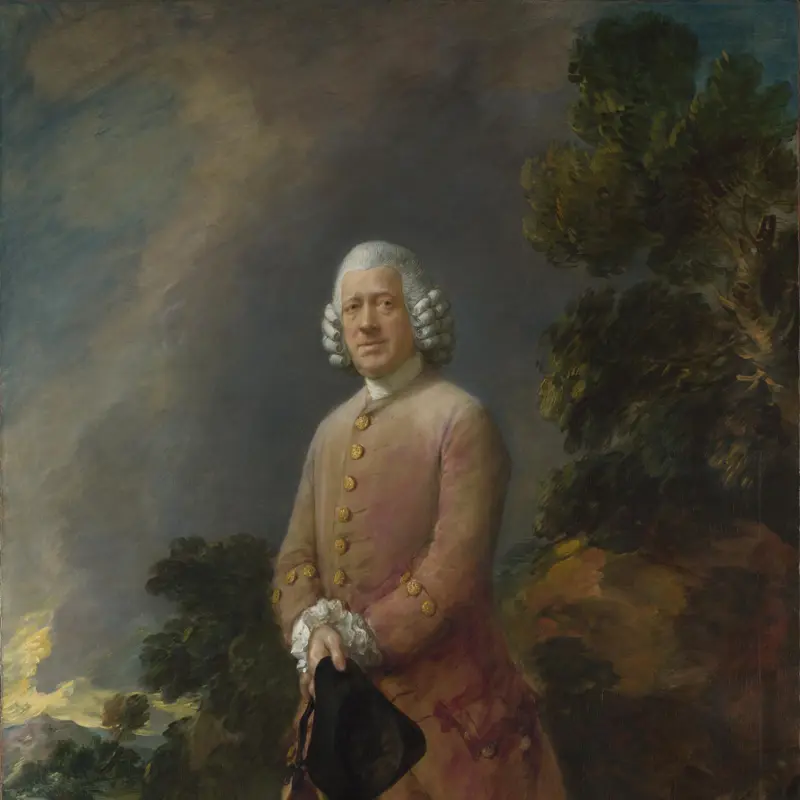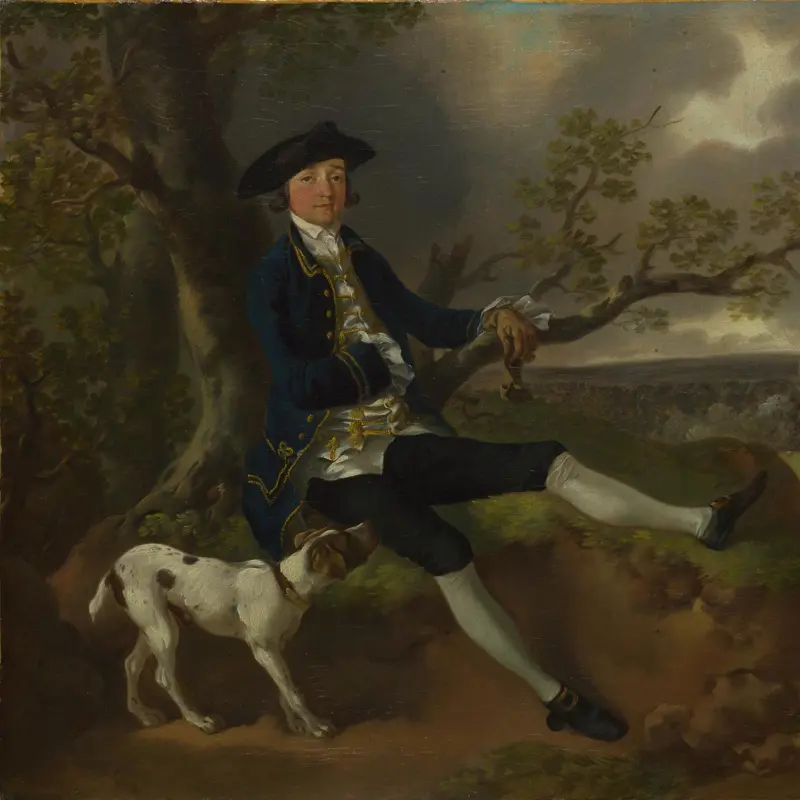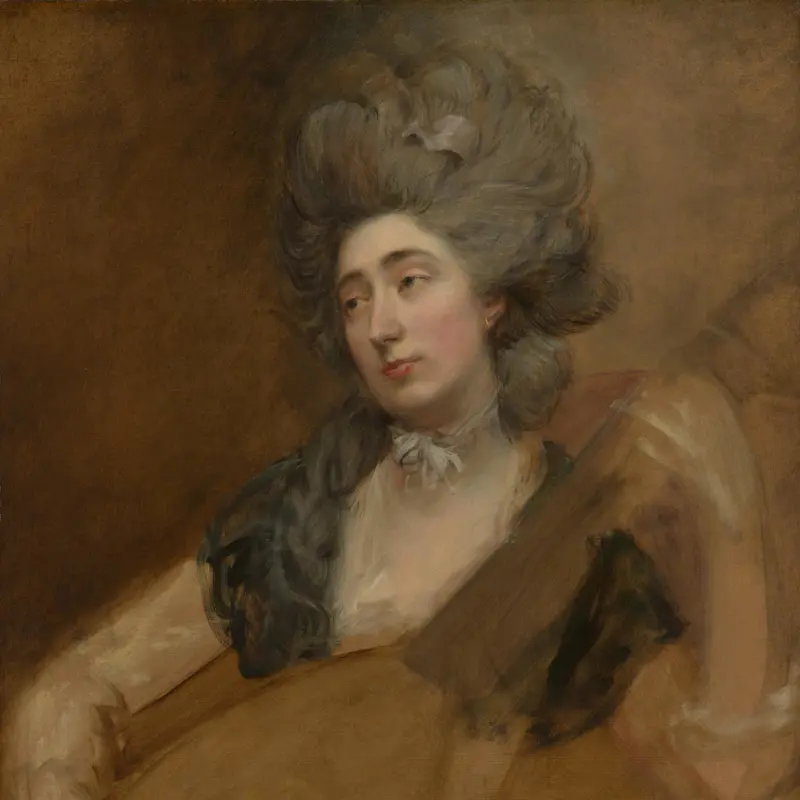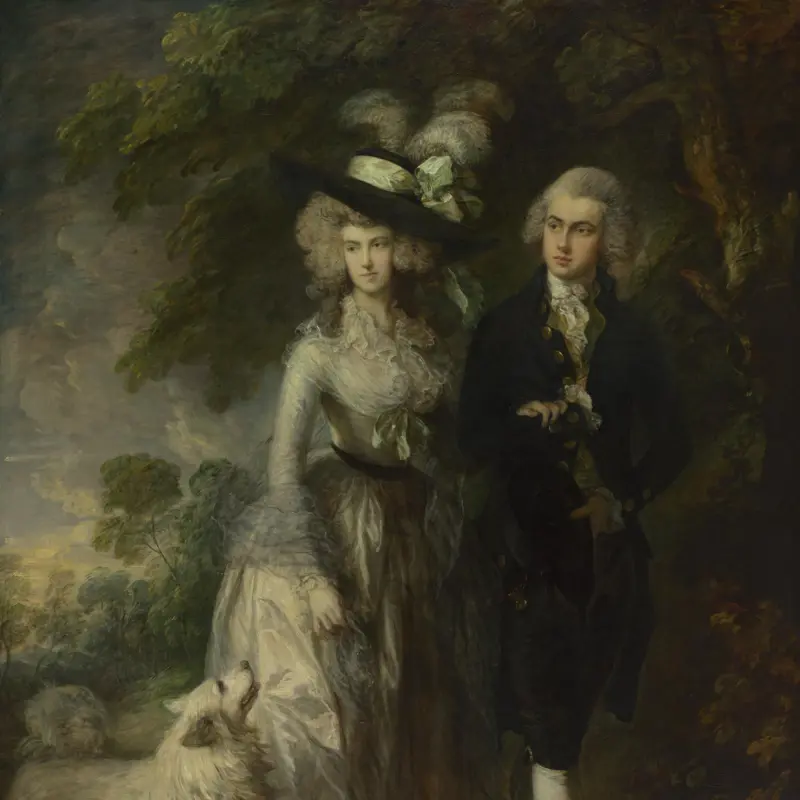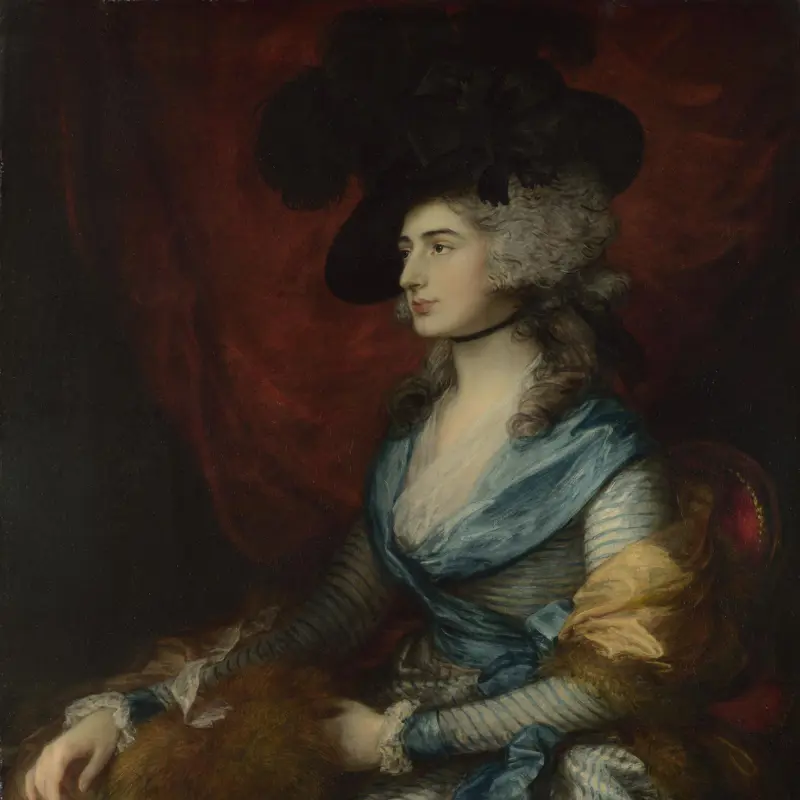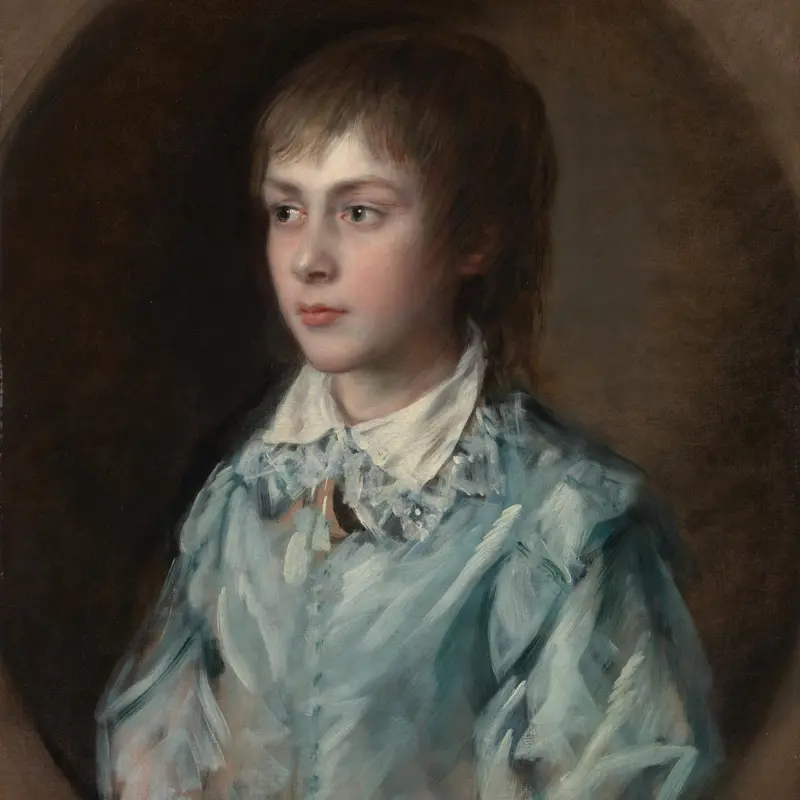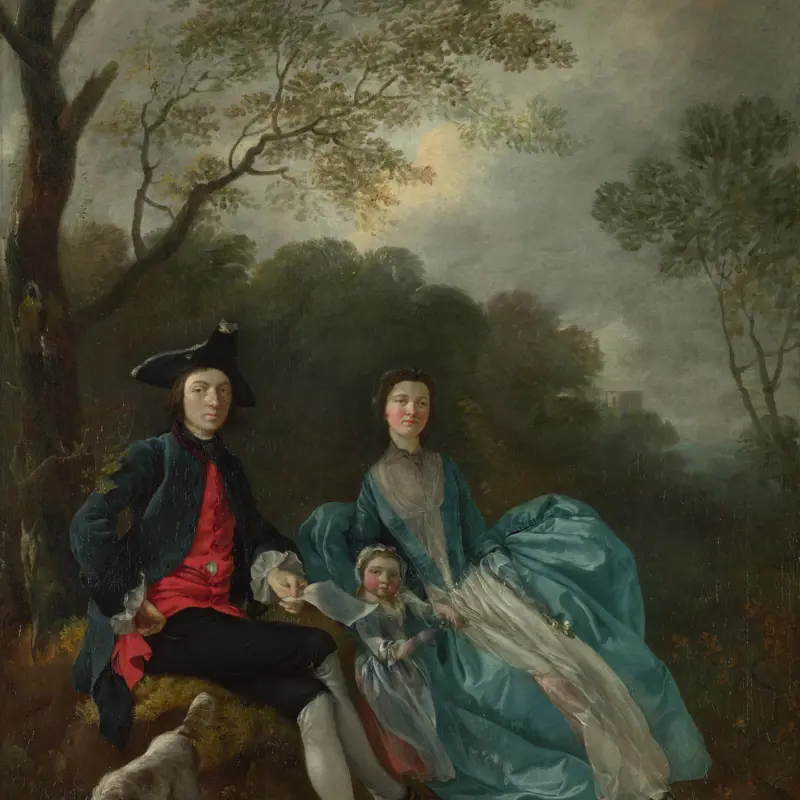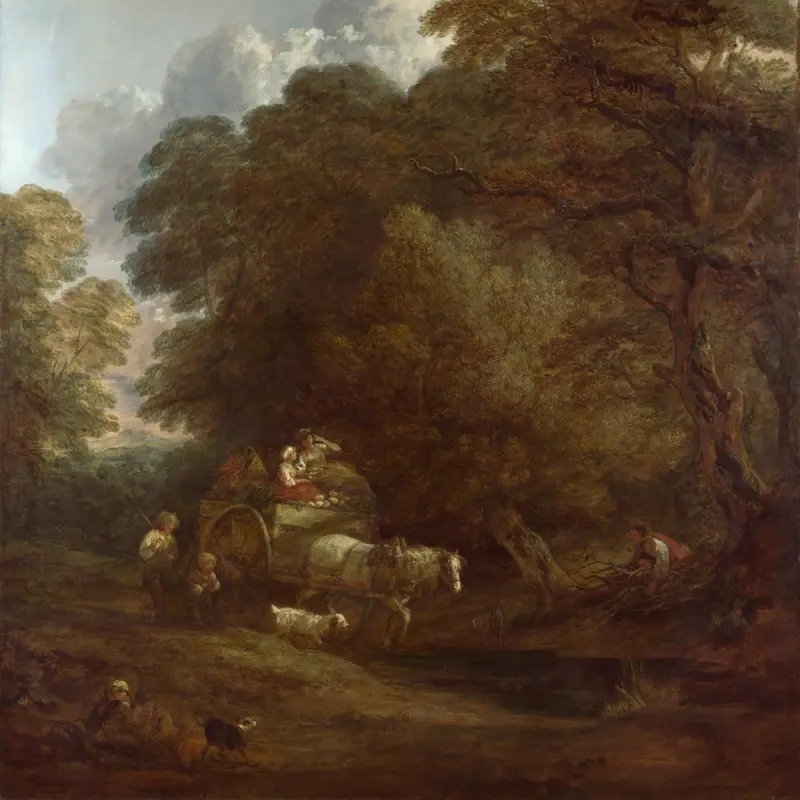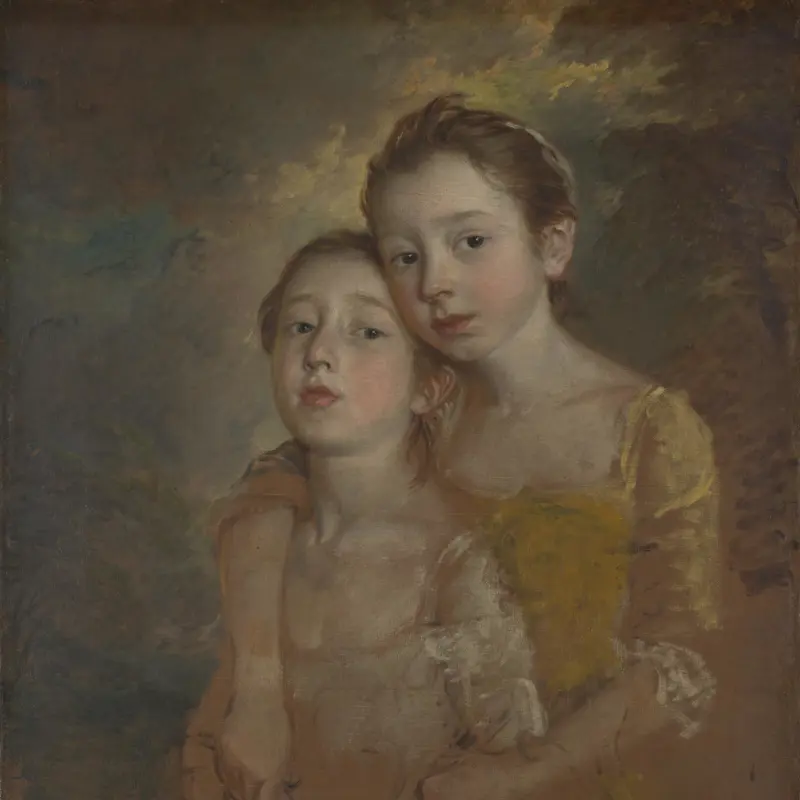Thomas Gainsborough, 'The Watering Place', before 1777
About the work
Overview
A group of cattle and goats has been herded to drink in a stream or pool. Two country girls, a child and a man sit quietly on the sandy bank. The sun begins to sink behind the distant hills, casting a golden evening light over the peaceful woody landscape.
Gainsborough’s painting is based on a drawing he made (private collection). It also echoes a painting by Rubens, now known as The Watering Place, which Gainsborough saw in London in 1768. But where Rubens’s work, now also in the National Gallery, is energetic and a morning scene, Gainsborough’s, glimpsed in fading light, is tranquil and contemplative.
This painting was exhibited by Gainsborough at the Royal Academy in 1777 and he also made an etching of the scene (Tate Gallery, London).
Key facts
Details
- Full title
- The Watering Place
- Artist
- Thomas Gainsborough
- Artist dates
- 1727 - 1788
- Date made
- Before 1777
- Medium and support
- Oil on canvas
- Dimensions
- 147.3 × 180.3 cm
- Acquisition credit
- Presented by Charles Long MP, later Lord Farnborough, 1827
- Inventory number
- NG109
- Location
- Room 34
- Collection
- Main Collection
- Frame
- 18th-century English Frame
Provenance
Additional information
Text extracted from the ‘Provenance’ section of the catalogue entry in Judy Egerton, ‘National Gallery Catalogues: The British Paintings’, London 2000; for further information, see the full catalogue entry.
Exhibition history
-
2011Gainsborough's Landscapes: Themes and VariationsHolburne Museum of Art24 September 2011 - 22 January 2012Compton Verney11 February 2012 - 10 June 2012
-
2018Thomas Gainsborough: the Modern LandscapeHamburger Kunsthalle2 March 2018 - 3 June 2018
-
2020Masterpieces from the National Gallery, LondonThe National Museum of Western Art18 June 2020 - 18 October 2020The National Museum of Art3 November 2020 - 31 January 2021
-
2021Botticelli to Van Gogh: Masterpieces from the National Gallery, LondonNational Gallery of Australia5 March 2021 - 14 June 2021
Bibliography
-
1771A.J. Boydell, Sculptura Britannica or a Collection of Prints… from the Most Capital Paintings in England, London 1771
-
1789G. Dupont, A Catalogue of the Pictures and Drawings of the Late Mr. Gainsborough, London, 1789
-
1814British Institution, Catalogue of Pictures by the Late William Hogarth, Richard Wilson, Thomas Gainsborough, and J. Zoffani, London 1814
-
1824British Institution, Pictures of the Italian, Spanish, Flemish, Dutch and English Schools: With Which the Proprietors Have Favoured the Institution (exh. cat., British Institution, London) London 1824
-
1836'The National Gallery', Blackwood’s Edinburgh Magazine, 1836, pp. 207-18
-
1854G.F. Waagen, Treasures of Art in Great Britain: Being and Account of the Chief Collections of Paintings, Drawings, Sculptures, Illuminated Mss. […], vol. 2, trans. E. Eastlake, London 1854
-
1915W.T. Whitley, Thomas Gainsborough, London 1915
-
1915M.H. Spielmann, 'A Note on Thomas Gainsborough and Gainsborough Dupont', The Walpole Society, V, 1917, pp. 91-108
-
1928W.T. Whitley, Art in England 1800-1820, Cambridge 1928
-
1928W.T. Whitley, Artists and their Friends in England 1700-1799, London 1928
-
1939M. Woodall, Gainsborough's Landscape Drawings, London 1939
-
1944T. Borenius, 'Gainsborough's Collection of Pictures', The Burlington Magazine, LXXXIV, 1944, pp. 107-10
-
1945E.K. Waterhouse, 'The Sale at Schomberg House, 1789', The Burlington Magazine, LXXXVI, 1945, pp. 76-8
-
1959Davies, Martin, National Gallery Catalogues: British School, 2nd edn (revised), London 1959
-
1963J.T. Hayes, 'Gainsborough and Rubens', Apollo, LXXVIII/18, August 1963, pp. 89-97
-
1968G. Martin, 'Lucas van Uden's Etchings after Rubens', Apollo, LXXXVII, 1968, pp. 210-1
-
1970G. Martin, The Flemish School, circa 1600-circa 1900, London 1970
-
1971J.T. Hayes, Gainsborough as Printmaker, New Haven 1971
-
1973L. Herrmann, British Landscape Painting of the Eighteenth Century, London 1973
-
1976H. Potterton, Reynolds and Gainsborough, Themes and Painters in the National Gallery 2, London 1976
-
1981D. Gordon, Rubens: The Watering Place and Gainsborough: The Watering Place (exh. cat. The National Gallery, 18 February - 20 April 1981), London 1981
-
1982J.T. Hayes, The Landscape Paintings of Thomas Gainsborough: A Critical Text and Catalogue Raisonné, Ithaca 1982
-
1987C. Brown, The National Gallery Schools of Painting: Flemish Paintings, London 1987
-
1991M. Cormack, The Paintings of Thomas Gainsborough, Cambridge 1991
-
1996C. Brown, Rubens's Landscapes (exh. cat. The National Gallery, 16 October 1996 - 19 January 1997), London 1996
-
1997M. Rosenthal (ed.), Prospects for the Nation: Recent Essays in British Landscape, 1750 1880, New Haven 1997
-
1998J.T. Hayes, Gainsborough and Rowlandson: A New York Private Collection, New York 1998
-
1998J. Egerton, The British School, London 1998
-
1998J.T. Hayes, Thomas Gainsborough (exh. cat. Palazzo dei Diamanti, Ferrara, 7 June - 30 August 1998), Ferrara 1998
-
2000Egerton, Judy, National Gallery Catalogues: The British Paintings, revised edn, London 2000
-
2001
C. Baker and T. Henry, The National Gallery: Complete Illustrated Catalogue, London 2001
About this record
If you know more about this work or have spotted an error, please contact us. Please note that exhibition histories are listed from 2009 onwards. Bibliographies may not be complete; more comprehensive information is available in the National Gallery Library.

